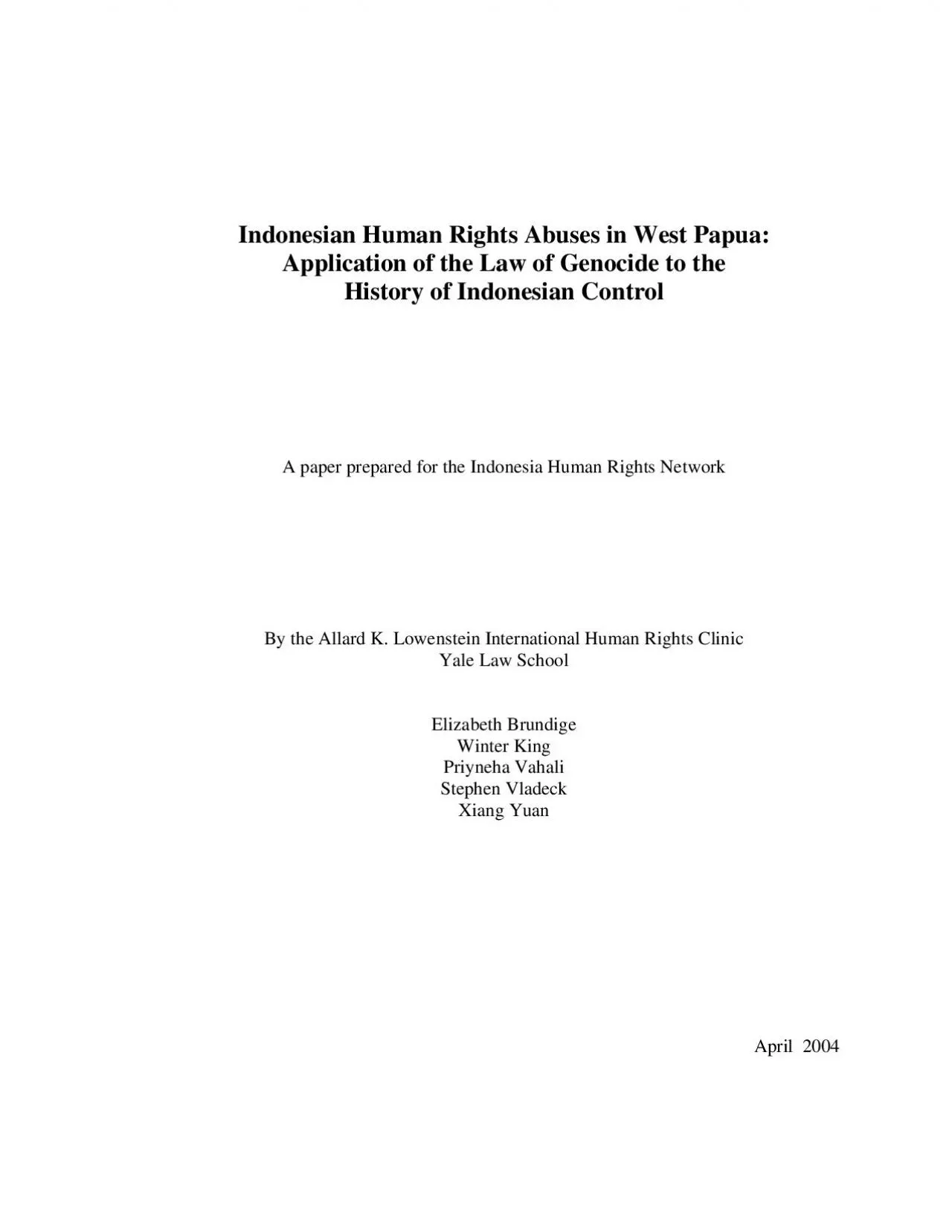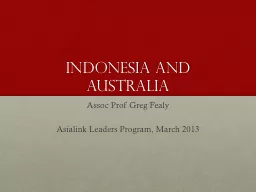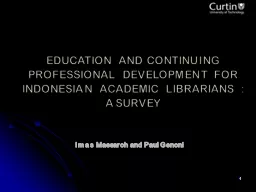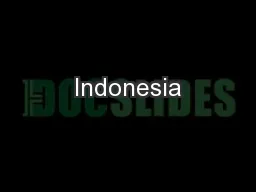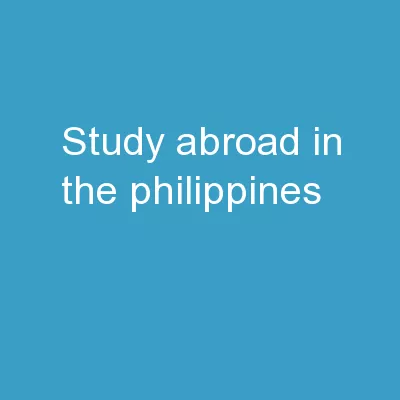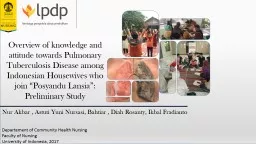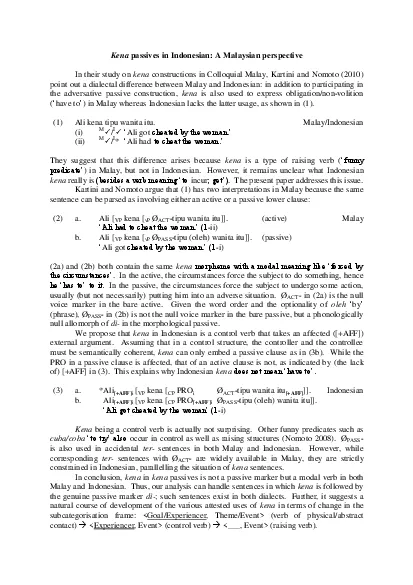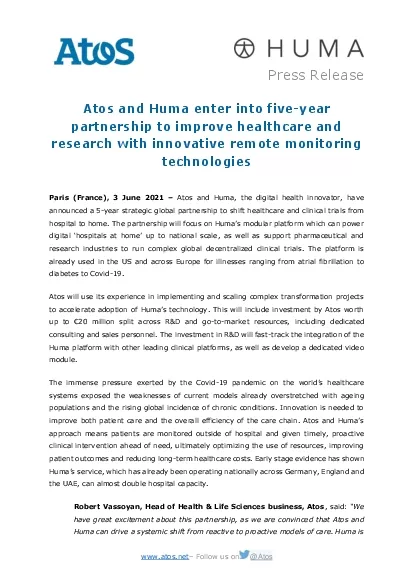PDF-History of Indonesian Control A paper prepared for the Indonesia Huma
Author : davis | Published Date : 2021-09-26
Acknowledgments This paper was written by Elizabeth Brundige Winter King Priyneha Vahali llard K Lowenstein International Human Professor James Silk director of
Presentation Embed Code
Download Presentation
Download Presentation The PPT/PDF document "History of Indonesian Control A paper p..." is the property of its rightful owner. Permission is granted to download and print the materials on this website for personal, non-commercial use only, and to display it on your personal computer provided you do not modify the materials and that you retain all copyright notices contained in the materials. By downloading content from our website, you accept the terms of this agreement.
History of Indonesian Control A paper prepared for the Indonesia Huma: Transcript
Acknowledgments This paper was written by Elizabeth Brundige Winter King Priyneha Vahali llard K Lowenstein International Human Professor James Silk director of the Lowenstein Clinic Barbara Mianzo a. A short guide to what they look like and how to use one!. © NSW Department of Education and Communities. , . 2013. Funded by the Australian Government Department of Education, Employment. . and Workplace. Assoc Prof Greg . Fealy. Asialink. Leaders Program, March 2013. outline. Key Indonesian historical events and Australia’s role. Current trends in Indonesia. Political. Economic. Socio-cultural and demographic. Socialization event, Indonesian Embassy The Hague, November 28 - . 2016 . Wiwi . Tjiook. Updates on Liveable Cities Session. 18 August 2013. Wiwi Tjiook. Foto CID 3. IDN TF . Liveable. . Cities. is . PROFESSIONAL DEVELOPMENT FOR INDONESIAN ACADEMIC LIBRARIANS : . A SURVEY. Imas. . Maesaroh. and Paul . Genoni. 2. The aim of research project. to examine ways in which Indonesian academic libraries can be developed . About . me. . . . Rani . Ayu. . Kusuma. . Dewi. . Hobbies. Singing, Swimming, Traveling . Where is INDONESIA?. Capital City : Jakarta. JAKARTA. Flag of Indonesia. . . SUMMER 2019. WHO WE ARE:. Noemi Teppang: . International Student Program Counselor. Contact Info:. teppangnoemi@fhda.edu. 408.864.5813. WHO WE ARE. Chesa Caparas:. Faculty in English and Intercultural Studies, Faculty Coordinator of the Jean Miller Resource Room for Women, Gender, and Sexuality. La gamme de thé MORPHEE vise toute générations recherchant le sommeil paisible tant désiré et non procuré par tout types de médicaments. Essentiellement composé de feuille de morphine, ce thé vous assurera d’un rétablissement digne d’un voyage sur . Overview of knowledge and attitude towards Pulmonary Tuberculosis Disease among Indonesian Housewives who join “ Posyandu Lansia ”: Preliminary Study Nur Akbar , Astuti Yuni Nursasi , Bahtiar . SYFTET. Göteborgs universitet ska skapa en modern, lättanvänd och . effektiv webbmiljö med fokus på användarnas förväntningar.. 1. ETT UNIVERSITET – EN GEMENSAM WEBB. Innehåll som är intressant för de prioriterade målgrupperna samlas på ett ställe till exempel:. 1. History Magistra Vitae. MATERI POKOK:. PERKEMBANGAN BUMI DAN MUNCULNYA MAKHLUK HIDUP. TERBENTUKNYA KEPULAUAN INDONESIA. CORAK KEHIDUPAN DAN HASIL-HASIL BUDAYA MANUSIA PADA MASA PRAAKSARA DI INDONESIA. Kenapassives A Malaysian perspectiveIn their study on kenaconstructions in Colloquial Malay Kartini and Nomoto2010pointout a dialectal difference between Malay and Indonesian in addition to participa Follow us onAtosPress ReleaseAtos and Huma enter intofive-year partnership to improve healthcare and research with innovative remote monitoring technologiesParisFrance3June2021Atos and Huma the digita An Interview with Marcus MietznerAfter an intense election campaign Indonesia146s constitutional court con29rmed Joko 147Jokowi148 Wido-do146s electoral victory on 21 August 2014 In this interview Mar History. Currency. Called the Rupiah. First objects used as currency in Indonesia are from the ix century. First Indonesian rupiah was issued on October 30. th. , 1946. Name is derived from the Sanskrit for silver ”.
Download Document
Here is the link to download the presentation.
"History of Indonesian Control A paper prepared for the Indonesia Huma"The content belongs to its owner. You may download and print it for personal use, without modification, and keep all copyright notices. By downloading, you agree to these terms.
Related Documents

